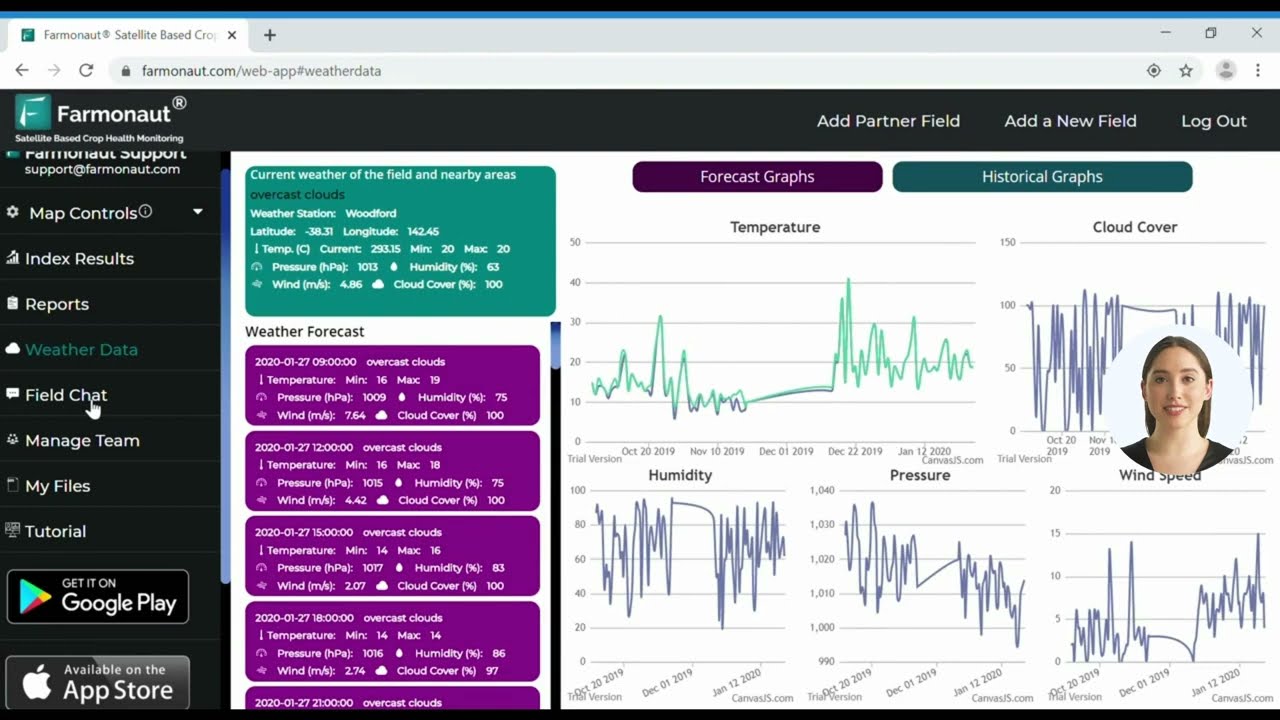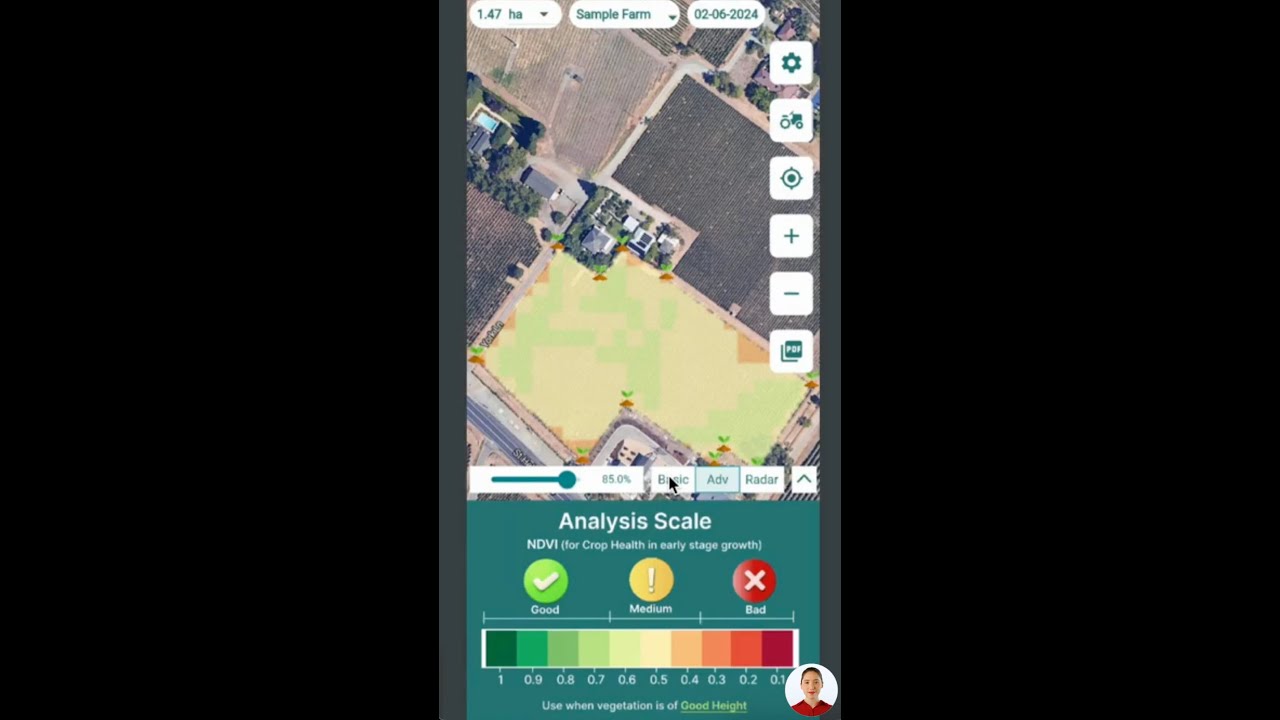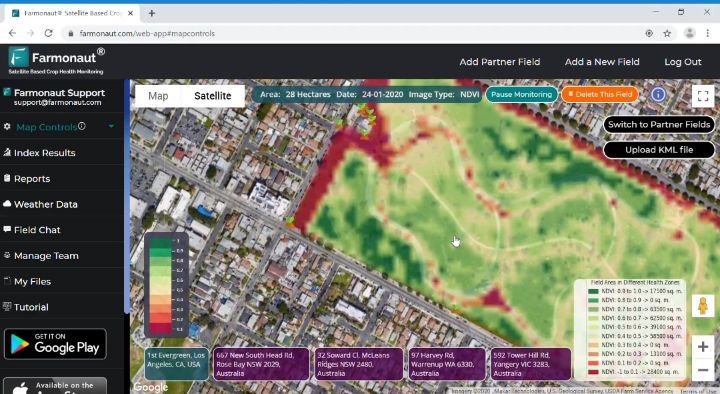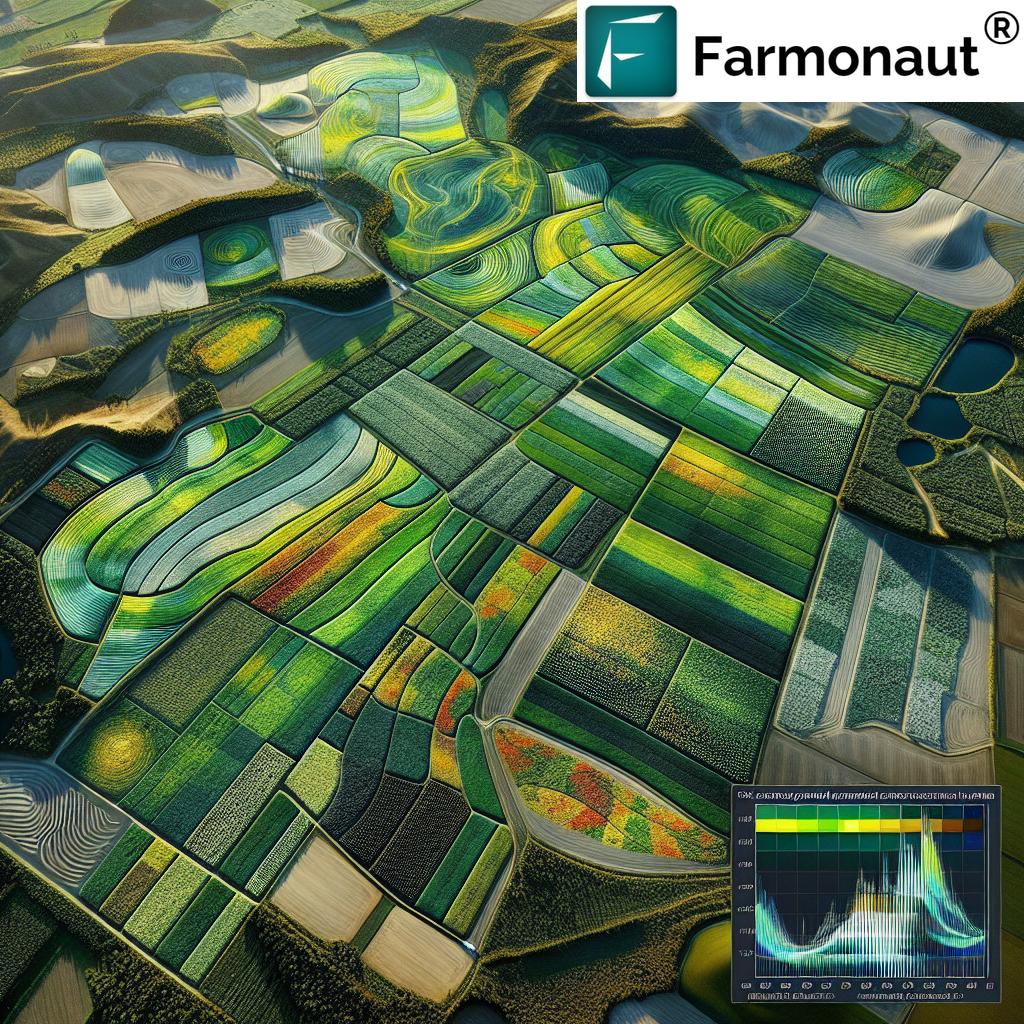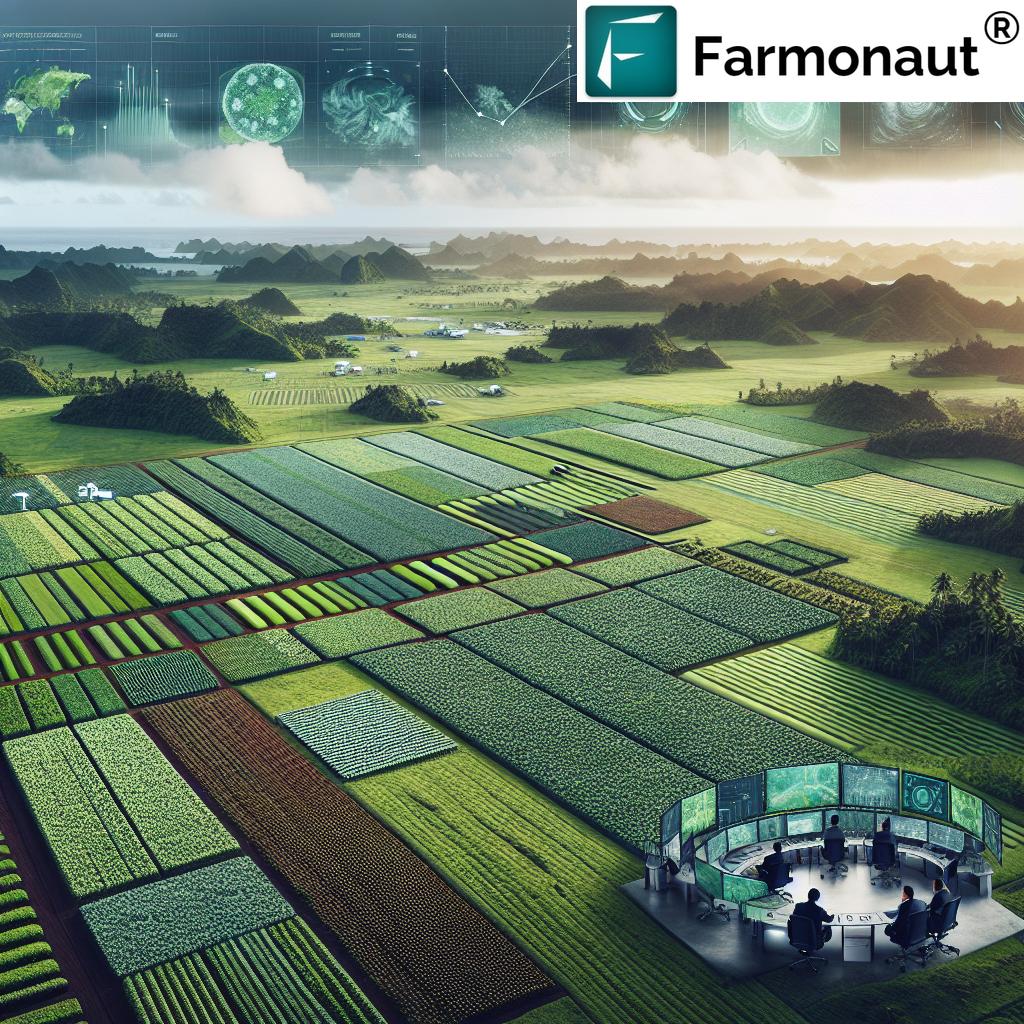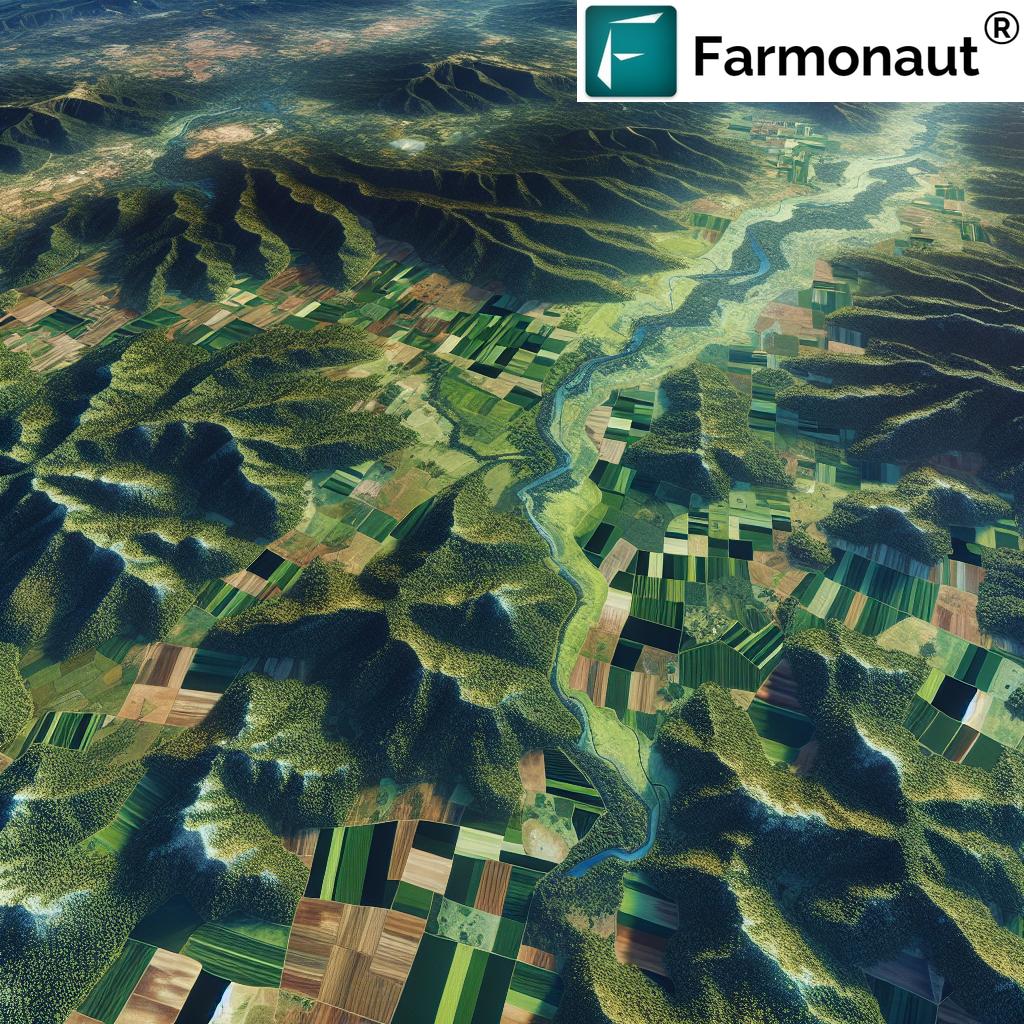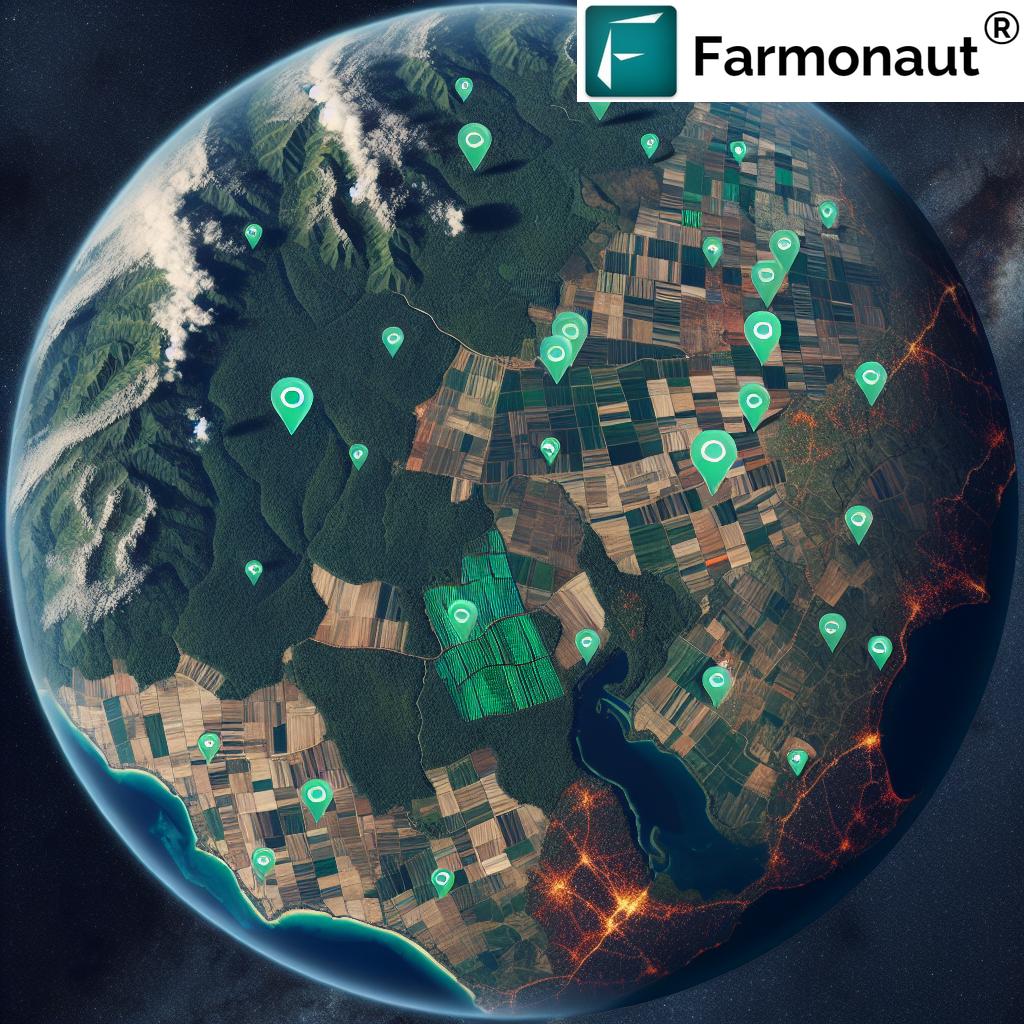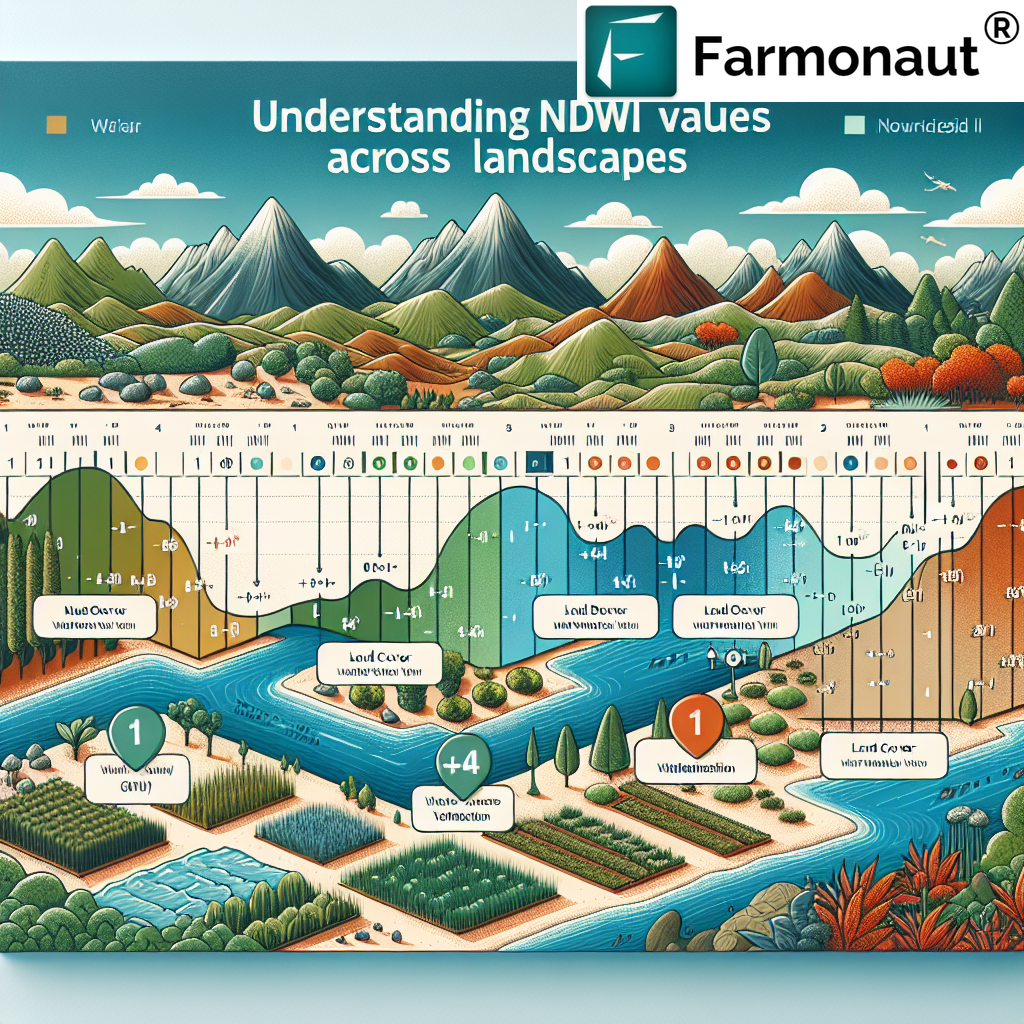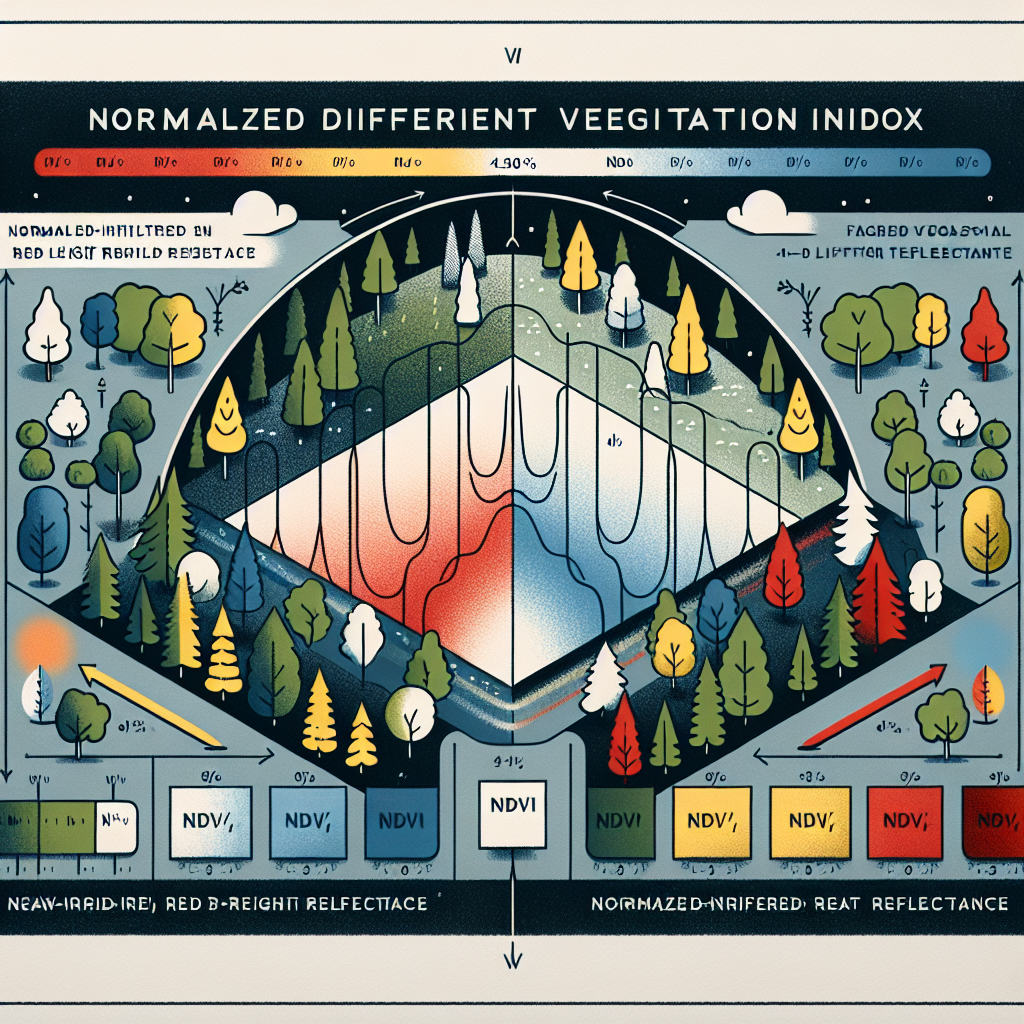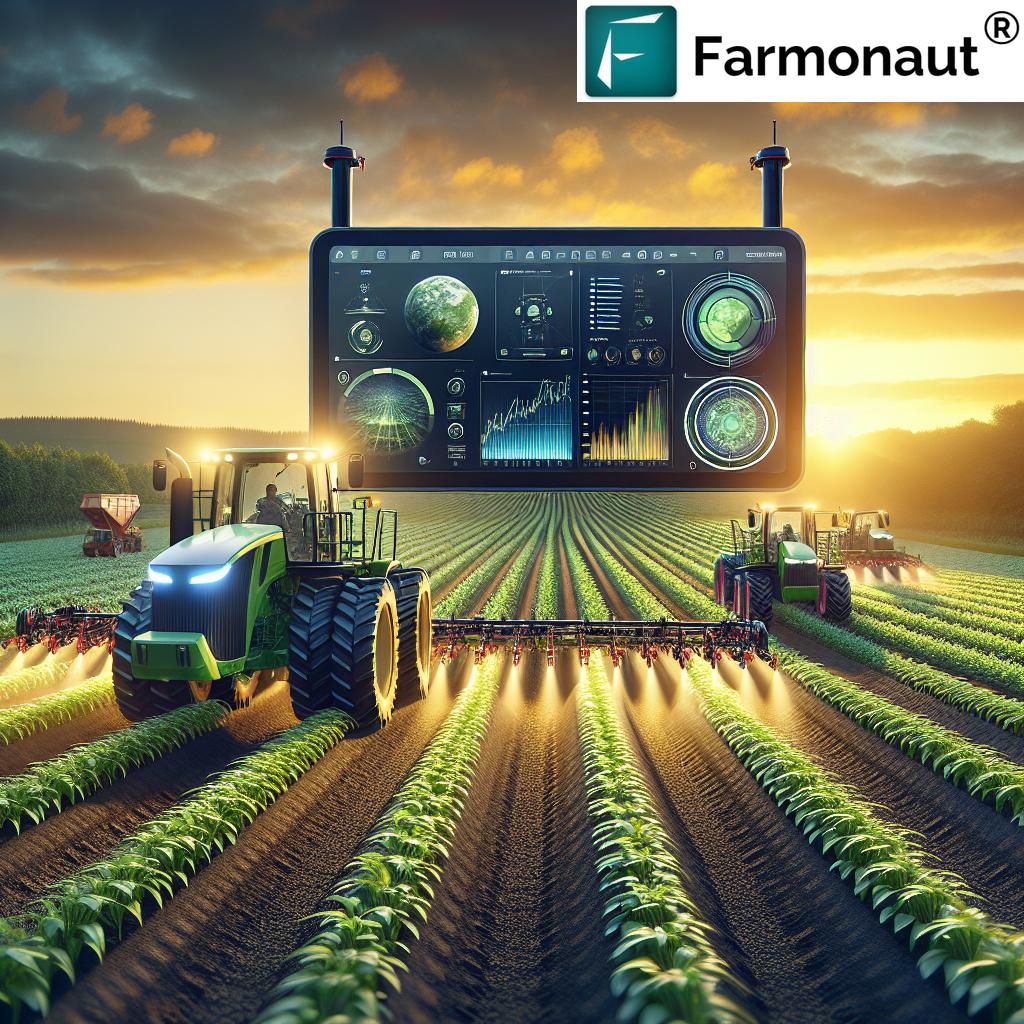Revolutionizing Crop Management: Farmonaut’s Latest Market Report on Wheat and Oilseed Trends Using GIS and Remote Sensing
In today’s rapidly evolving agricultural landscape, staying informed about crop market trends and leveraging cutting-edge technology is crucial for farmers and agribusinesses alike. At Farmonaut, we’re committed to providing the most up-to-date agriculture market reports and innovative solutions to help you optimize your farming operations. In this comprehensive blog post, we’ll dive deep into the latest wheat and oilseed market trends, explore the transformative power of GIS and remote sensing in agriculture, and showcase how Farmonaut’s precision farming techniques are revolutionizing crop management.
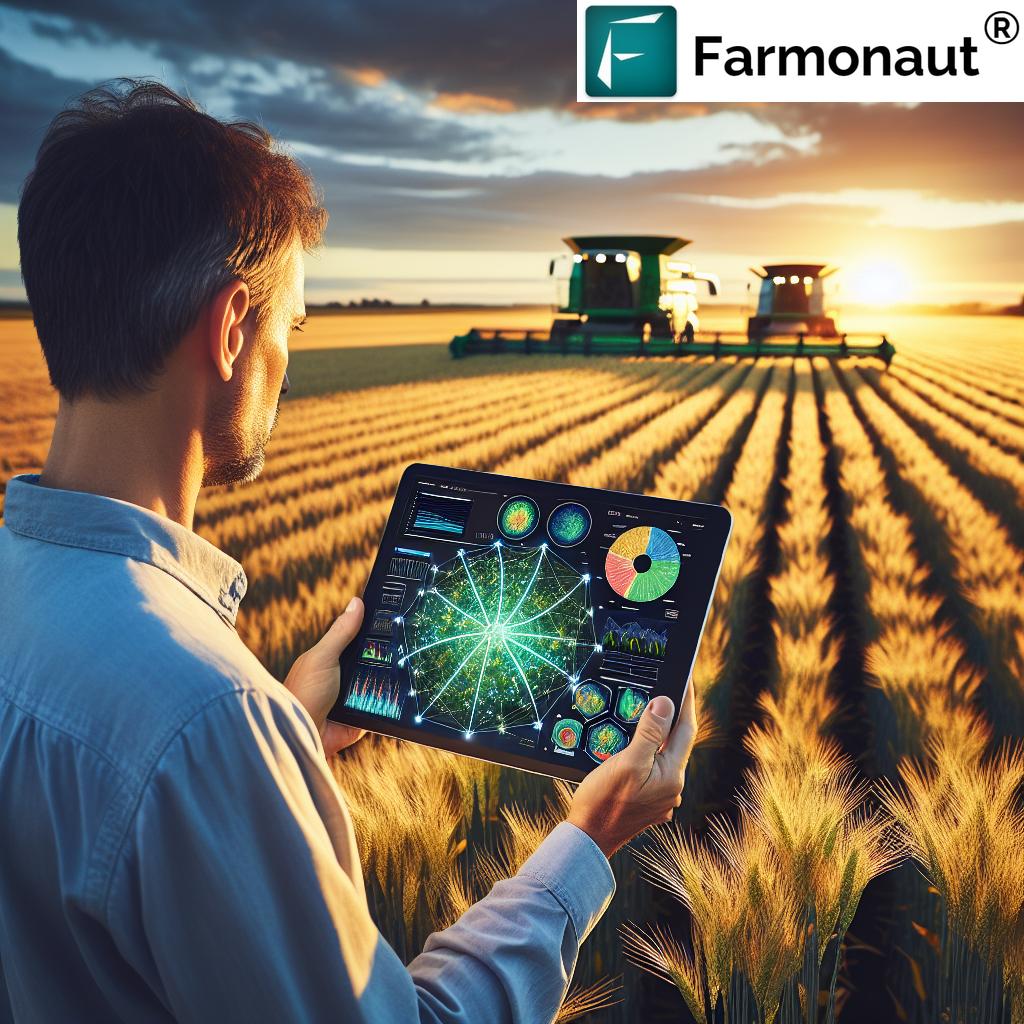
“Farmonaut’s precision farming techniques have increased crop yields by up to 25% in wheat and oilseed production.”
The Current State of Wheat and Oilseed Markets
Before we delve into the technological advancements revolutionizing crop management, let’s examine the current state of wheat and oilseed prices and production trends. Understanding these market dynamics is essential for making informed decisions about crop selection, resource allocation, and farm management strategies.
Wheat Market Overview
- Global wheat production is expected to reach 789 million tonnes in the current crop year, a slight increase from the previous year.
- Prices have shown volatility due to geopolitical tensions and weather-related disruptions in major producing regions.
- Demand remains strong, particularly in developing countries, driving export opportunities for efficient producers.
Oilseed Market Dynamics
- Oilseed rape production has seen a steady increase, with global output projected to reach 71 million tonnes.
- Prices have been influenced by growing demand for biofuels and plant-based proteins.
- Soybean markets continue to dominate the oilseed sector, with significant production in the Americas and increasing cultivation in other regions.
To provide a clearer picture of the current market situation, we’ve compiled a comparative table showcasing the trends for wheat and oilseed crops:
| Crop Type | Current Price ($/bushel) | Year-over-Year Change (%) | Production Forecast (million tons) | Key Factors Influencing Price |
|---|---|---|---|---|
| Hard Red Winter Wheat | 6.25 | +3.5% | 285 | Drought conditions in key growing regions |
| Soft Red Winter Wheat | 5.90 | +2.8% | 195 | Increased export demand |
| Soybeans | 12.80 | +5.2% | 380 | Rising biofuel demand, supply chain disruptions |
| Canola | 14.50 | +4.7% | 71 | Expanding use in food industry, weather-related yield concerns |
As we can see from the table, both wheat and oilseed crops are experiencing positive price trends, driven by a combination of supply constraints and growing global demand. These market conditions present both challenges and opportunities for farmers, highlighting the importance of efficient crop management and data-driven decision-making.
The Role of GIS and Remote Sensing in Modern Agriculture
In an era where precision and efficiency are paramount, Geographic Information Systems (GIS) and remote sensing technologies have emerged as game-changers in the agricultural sector. These advanced tools are transforming how we approach farm planning, crop monitoring, and resource management.
GIS for Farm Planning
GIS for farm planning has revolutionized the way farmers and agribusinesses approach land management. By integrating various data layers such as soil types, topography, and historical yield data, GIS enables farmers to:
- Optimize field layouts and crop rotations
- Identify areas prone to erosion or water logging
- Plan efficient irrigation systems
- Manage livestock grazing patterns in grasslands
The application of GIS extends beyond arable land, proving invaluable for dairy farms, poultry operations, and even beekeeping. By providing a comprehensive view of the farm ecosystem, GIS helps in making informed decisions that boost productivity while promoting sustainable agriculture practices.
Remote Sensing in Agriculture
Remote sensing in agriculture has opened up new frontiers in crop monitoring and management. By utilizing satellite imagery and other airborne sensors, farmers can now access real-time data on:
- Crop health and vigor
- Soil moisture levels
- Pest and disease outbreaks
- Nutrient deficiencies
This wealth of information allows for timely interventions, targeted application of inputs, and more accurate yield predictions. At Farmonaut, we’ve harnessed the power of remote sensing to develop cutting-edge solutions that put this valuable data at your fingertips.
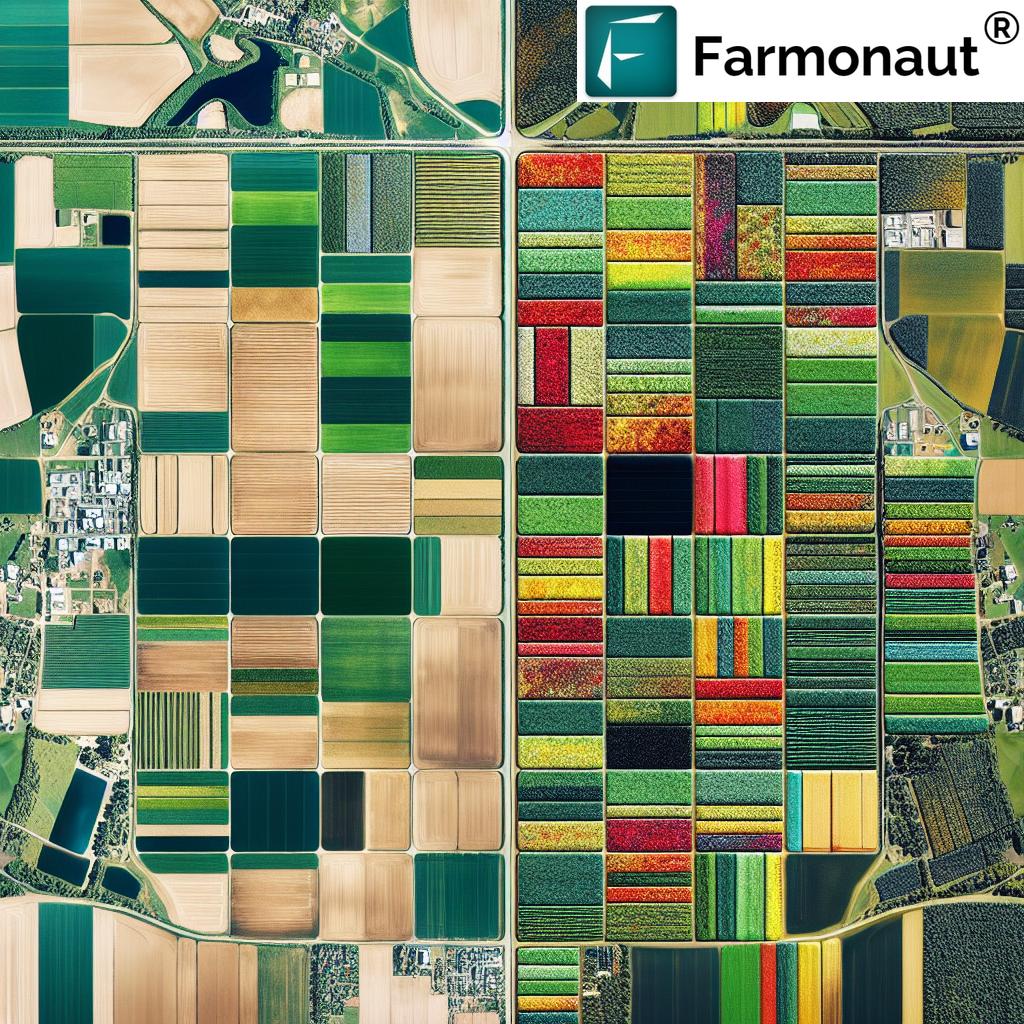
Farmonaut’s Precision Farming Techniques
At Farmonaut, we’re proud to be at the forefront of the agricultural technology revolution. Our suite of precision farming techniques combines the power of satellite imagery, artificial intelligence, and expert agronomic knowledge to deliver unparalleled insights and support to farmers worldwide.
Satellite-Based Crop Health Monitoring
Our advanced satellite-based crop health monitoring system provides farmers with real-time insights into their fields’ conditions. By analyzing multispectral imagery, we can detect early signs of stress, nutrient deficiencies, or pest infestations, allowing for timely interventions that can significantly improve crop yields.
Key features of our crop monitoring system include:
- Vegetation health indices (e.g., NDVI) to assess crop vigor
- Soil moisture analysis for optimized irrigation scheduling
- Crop growth stage monitoring for targeted management practices
- Historical data comparison for long-term trend analysis
To see our satellite-based crop monitoring system in action, check out this informative video:
AI-Powered Advisory System
Our Jeevn AI advisory system takes precision farming to the next level by providing personalized recommendations based on real-time data and advanced analytics. This powerful tool helps farmers make data-driven decisions on various aspects of crop management, including:
- Fertilizer application timing and rates
- Pest and disease management strategies
- Irrigation scheduling
- Harvest timing optimization
By leveraging machine learning algorithms and expert agronomic knowledge, Jeevn AI continuously improves its recommendations, adapting to your farm’s unique conditions and helping you achieve optimal crop performance.
“GIS-based farm planning has reduced water usage by 30% across various agricultural operations, from arable land to dairy farms.”
Sustainable Agriculture Practices and Resource Management
In an era of increasing environmental concerns and resource scarcity, adopting sustainable agriculture practices is no longer optional—it’s imperative. At Farmonaut, we’re committed to helping farmers implement eco-friendly strategies that not only benefit the environment but also improve long-term profitability.
Precision Resource Management
Our technology enables farmers to practice precision agriculture, which means applying the right inputs at the right time and in the right amounts. This approach leads to:
- Reduced fertilizer and pesticide usage, minimizing environmental impact
- Optimized water usage through smart irrigation management
- Improved soil health through targeted conservation practices
- Lower production costs and increased profitability
By providing detailed insights into field variability and crop needs, we empower farmers to make informed decisions that maximize efficiency while minimizing waste.
Carbon Footprint Tracking
As the agricultural sector faces increasing pressure to reduce its environmental impact, carbon footprint tracking has become a crucial tool for sustainable farm management. Our platform offers:
- Real-time monitoring of greenhouse gas emissions
- Recommendations for carbon sequestration practices
- Tools for reporting and compliance with environmental regulations
This feature not only helps farmers contribute to global climate change mitigation efforts but also positions them to benefit from emerging carbon credit markets and sustainability-focused government policies.
To learn more about how satellite data is transforming agriculture, watch this informative tutorial:
The Impact of Government Policies on Agriculture
Government policies play a significant role in shaping the agricultural landscape, influencing everything from crop choices to farming practices. Understanding and adapting to these policies is crucial for long-term success in the industry.
Current Policy Trends
- Sustainability Initiatives: Many governments are implementing policies to promote sustainable farming practices, including incentives for organic farming and renewable energy adoption in agriculture.
- Food Security Measures: In light of recent global events, there’s an increased focus on domestic food production and supply chain resilience.
- Technology Adoption Support: Programs to encourage the adoption of precision farming technologies and digital agriculture solutions are becoming more common.
- Rural Development: Policies aimed at supporting rural life and diversification of farm income sources are gaining traction.
How Farmonaut Helps Navigate Policy Landscapes
Our platform is designed to help farmers not only comply with current regulations but also position themselves to benefit from policy incentives:
- Detailed record-keeping and reporting tools for compliance purposes
- Alerts and updates on relevant policy changes affecting your region
- Guidance on adopting practices that align with sustainability-focused policies
- Tools for optimizing operations to qualify for government support programs
By staying informed and adaptable, farmers can turn policy challenges into opportunities for growth and innovation.
Diversification Strategies for Modern Farms
In today’s dynamic agricultural environment, diversification has become a key strategy for risk management and revenue growth. Let’s explore some effective diversification approaches that can complement traditional crop farming:
Integrated Livestock Operations
Adding livestock to arable farming operations can provide numerous benefits:
- Diversified income streams
- Improved soil fertility through manure application
- Utilization of crop residues as feed
- Enhanced resilience to market fluctuations
Whether it’s incorporating cattle, sheep, pigs, or poultry, integrating livestock can significantly boost farm profitability and sustainability.
Alternative Crops and Value-Added Products
Exploring niche markets and value-added products can open up new revenue opportunities:
- Specialty grains and oilseeds for health food markets
- Medicinal herbs and plants
- On-farm processing and direct marketing of products
- Agritourism and educational programs
Our platform can help identify suitable alternative crops based on your farm’s specific conditions and market demand.
Renewable Energy Integration
Incorporating renewable energy projects can provide additional income while reducing operational costs:
- Solar panel installations on farm buildings
- Wind turbines in suitable locations
- Biogas production from agricultural waste
Farmonaut’s GIS capabilities can assist in identifying optimal locations for renewable energy installations, maximizing their efficiency and return on investment.
To see how Farmonaut is making farming better with satellite data, watch this overview:
The Future of Agriculture: Trends and Innovations
As we look to the future, several emerging trends and innovations are set to reshape the agricultural landscape:
Artificial Intelligence and Machine Learning
AI and machine learning are revolutionizing farm management by:
- Predicting crop yields with unprecedented accuracy
- Automating pest and disease detection
- Optimizing resource allocation based on complex data analysis
At Farmonaut, we’re continuously integrating these advanced technologies into our platform to provide you with cutting-edge solutions.
Vertical Farming and Urban Agriculture
As urbanization continues, new forms of agriculture are emerging:
- Vertical farms utilizing hydroponics and aeroponics
- Rooftop gardens and urban greenhouses
- Innovative solutions for year-round local food production
While our primary focus is on traditional farming, we’re exploring ways to adapt our technology for these emerging agricultural systems.
Blockchain in Agriculture
Blockchain technology is set to transform agricultural supply chains by:
- Enhancing traceability and transparency
- Streamlining payments and transactions
- Improving food safety and quality assurance
Our blockchain-based traceability solutions are at the forefront of this revolution, helping to build trust and efficiency throughout the agricultural value chain.
Conclusion: Embracing Technology for Agricultural Success
As we’ve explored throughout this blog post, the agricultural sector is undergoing a profound transformation driven by technological innovation and changing market dynamics. From the latest wheat and oilseed prices to cutting-edge precision farming techniques, staying informed and adaptable is key to success in modern agriculture.
At Farmonaut, we’re committed to empowering farmers with the tools and insights they need to thrive in this evolving landscape. Our comprehensive platform combines the power of GIS, remote sensing, and artificial intelligence to deliver actionable insights that drive crop yield optimization and promote sustainable agriculture practices.
Whether you’re managing vast arable lands, diversifying into livestock, or exploring new revenue streams, our solutions are designed to support your unique needs and help you make data-driven decisions that boost profitability and sustainability.
As we look to the future, we’re excited to continue innovating and developing new solutions that address the challenges and opportunities facing the agricultural sector. By embracing technology and staying attuned to market trends, we believe that farmers can not only survive but thrive in the years to come.
Ready to revolutionize your approach to crop management? Explore Farmonaut’s solutions today and take the first step towards a more productive, sustainable, and profitable farming future.
For developers:
Explore our API and API Developer Docs to integrate Farmonaut’s powerful capabilities into your own applications.
Farmonaut Subscriptions
Frequently Asked Questions
Q: How does Farmonaut’s satellite-based crop monitoring work?
A: Our system uses multispectral satellite imagery to analyze various aspects of crop health, including vegetation indices, soil moisture, and growth stages. This data is processed through our advanced algorithms to provide actionable insights directly to farmers through our user-friendly platform.
Q: Can Farmonaut’s solutions be used for all types of crops?
A: While our technology is particularly effective for major crops like wheat and oilseeds, it can be applied to a wide range of crop types. Our system is constantly evolving to incorporate new crop-specific models and insights.
Q: How often is the satellite data updated?
A: The frequency of updates depends on the subscription plan and satellite coverage for your region. Typically, we provide updates every 3-5 days, ensuring you have access to timely information for decision-making.
Q: Is Farmonaut suitable for small-scale farmers?
A: Absolutely! We’ve designed our platform to be accessible and valuable for farms of all sizes. Our tiered pricing structure ensures that even small-scale farmers can benefit from our advanced technology without breaking the bank.
Q: How can I integrate Farmonaut’s data with my existing farm management software?
A: We offer API access that allows for seamless integration with many popular farm management systems. Our developer documentation provides detailed guidance on how to incorporate our data into your existing workflows.
By leveraging Farmonaut’s advanced technology and insights, farmers can stay ahead of market trends, optimize their operations, and build more resilient and profitable agricultural businesses. Join us in revolutionizing crop management and shaping the future of sustainable agriculture.


